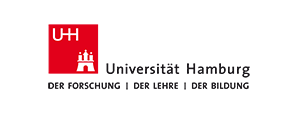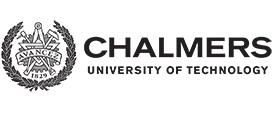Minutes of the sixth International Radiative Transfer Workshop,
June 2004
Monday
Tuesday
Wednesday
Thursday
Whole Week
BREDBECK 2004 Minutes
=======================
Thursday, 24/06/04
Group Work summary
==================
Surface emissivity group (Steve)
================================
* current status in arts
- general solution for full stokes hemispherical integration
including separate handling of emission and reflection
- no physics for any actual surfaces
* what is available
- FASTEM2 in RTTOV7 - calculates v,h given wind speed and skin temp
for ocean.
- land model is purely empirical, atlases(C. Pringent, t. Hewison)
- FASTEM3 in RTTOV8 - added a correction to emission term for
azimuthal variations for all azimuthal variations (Poe.G via
Weng.F).
- f.weng - NOAA snow + sea ice emissivity model
- IOMASA snow + sea ice emissivity model
- c.matzler - snow emissivity - complicated
* recommendations
- high priority
- incorporate FASTEM3 from RTTOV8 ocean only.
- this is easy- land code less valuable
- adapt arts input interface to accept wind vector and skin temp.
- retain direct input of pre-calculated emissivity.
- add no other surface variables yet
- medium priority
- consider replacing FASTEM3 with full GO model exploiting
general solution already in ARTS
- info from AAPP or other sources to pre-calculate emissivity
- low priority
- when schemes for land, ice, snow emissivity mature and simplify
- incorporate in arts
- also take care of different definitions of stokes vector
- look at windsat data
Research ideas (Cory)
=====================
* writing papers looking at science issues
* looking at cloud micro physics
* real ice water content field
* find a cloud field scenario
* comparison of RT models - MC and DOIT
* discussed Claas' problem at 500 GHz
- cory will do it for MC
- problem with scattering integral for 1D DOIT method for higher stokes component.
SB - something to look into in at Bremen
SB - any ideas for the 3D scenario?
CD - output from RT study, TRMM (last slide of cory's presentation)
SB - good thing to look at RAL scenario explained in UTLS study
RTTOV-ARTS comparison (Una)
===========================
* clear sky results - quite good agreement
* rttovscatt doesn't simulate lowest TB's
* ARTS vs obs good(re = 100 um)
* micro physics - step back from RT - agree on suitable size distr param
- set distr. by max crystal size rather than mean crystal size
* surface emissivity
* 3 way model intercomparison
- to involve al gasievsky's model
General RTM (Franz)
===================
* discussed parameterization of RT models
PyARTS group (Cory)
===================
* short presentation of what PyARTS can do
* grid optimization - patrick's numerical method was discussed
- one has to derive the optimized grid from a set of different scenarios
- scattering integral calculation- improvement using gauss-legendre method
SB - isn't that difficult?
CD - if the function can be represented by a polynomial, you can get accu
rate results
SB - if the phase matrix is peaked, one has to be careful
CD - trapezoidal integration is not sufficient
AMSU working group (Nathalie)
=============================
* ozone line problem
- influence?
- 10 years ago, metoffice did some calculation and found negligible
differences
- about 0.3 K difference was found during some recent calculation at Bremen
- some calculations will be done again including stratospheric and
excluding and then comparing.
AI - send the fascod profiles to Steve to perform similar calculation
* scan angle dependence on AMSU-B
- amsu-a biases are not symmetric and can be found from NCEP
- amsu-b biases are symmetric
- steve can also give info on values regarding biases
*NOAA 15 and 16 BT diff
- a 1K difference was found in the calculation at Bremen
AI - to compare NOAA 15 and NOAA 17
* side bands
- rectangular pass band for ARTS and RTTOVB
- diff are negligible with Gaussian passbands
* ARTS - RTTOV comparison
- differences are larger than the mean difference at some places
AI - checks whether the profiles are within RTTOV limits
AI - check temp profiles - strong inversion
AI - extract those profiles and perform with a fine grid using ARTS
* AMSU -B channel 18
AUG group (Patrick)
===================
* overview of documentation structure
* control file examples - AI to remove old files and update them
with working new ones
* details by command line help
* code documented by doxygen and code comments
* no link between arts-xml-data and arts1-1
- arts-xml-data only for internal usage
* went through the AUG
- no obsolete text and FIXME
* doxygen doc- highly appreciated
- command line description of WSMs will be put into doxygen
Future plans
============
SE - surface data from some low-frequency instruments
SB - lower frequencies were not the priority
- in the framework of the new instruments, sub-mm frequency are preferred
SE - but one can test the model for low frequencies
PE - single scattering properties - IR?
- is the database by Bonn going to be general? to be useful for IR.
CD - it is intended to be more general for any RT calculation
SB - use mailing lists with suggestions
- Adrian for ex. can communicate about his single scattering code.
CM - working group summaries, presentations on the web page
Everyone agreed
SB - if somebody need papers that were discussed, can be obtained.
CM - Dietrich's paper on intercomparison on JPL and HITRAN.
==============================================================================
Monday
Tuesday
Wednesday
Thursday
Whole Week

